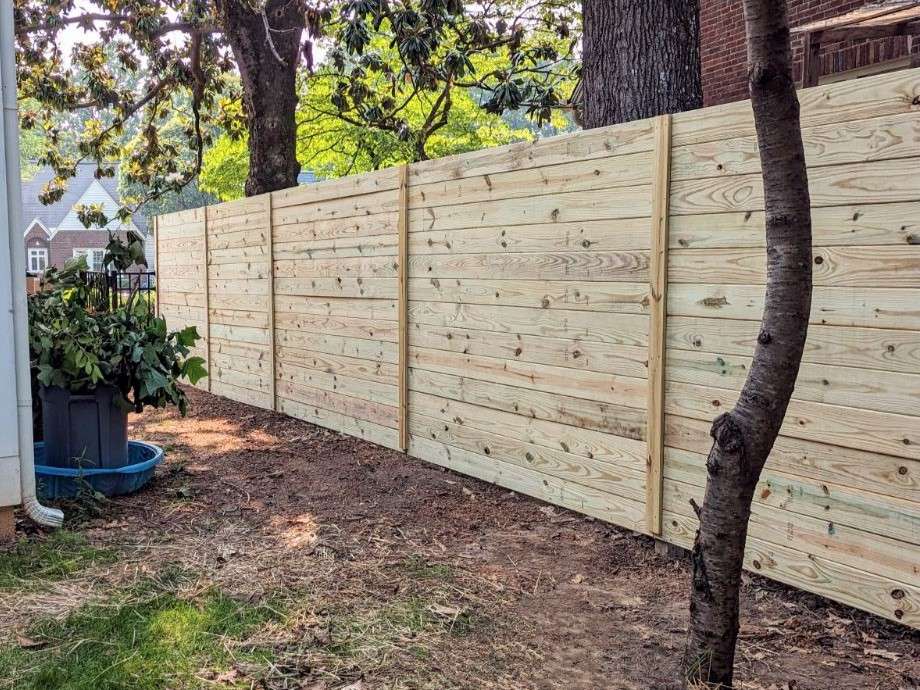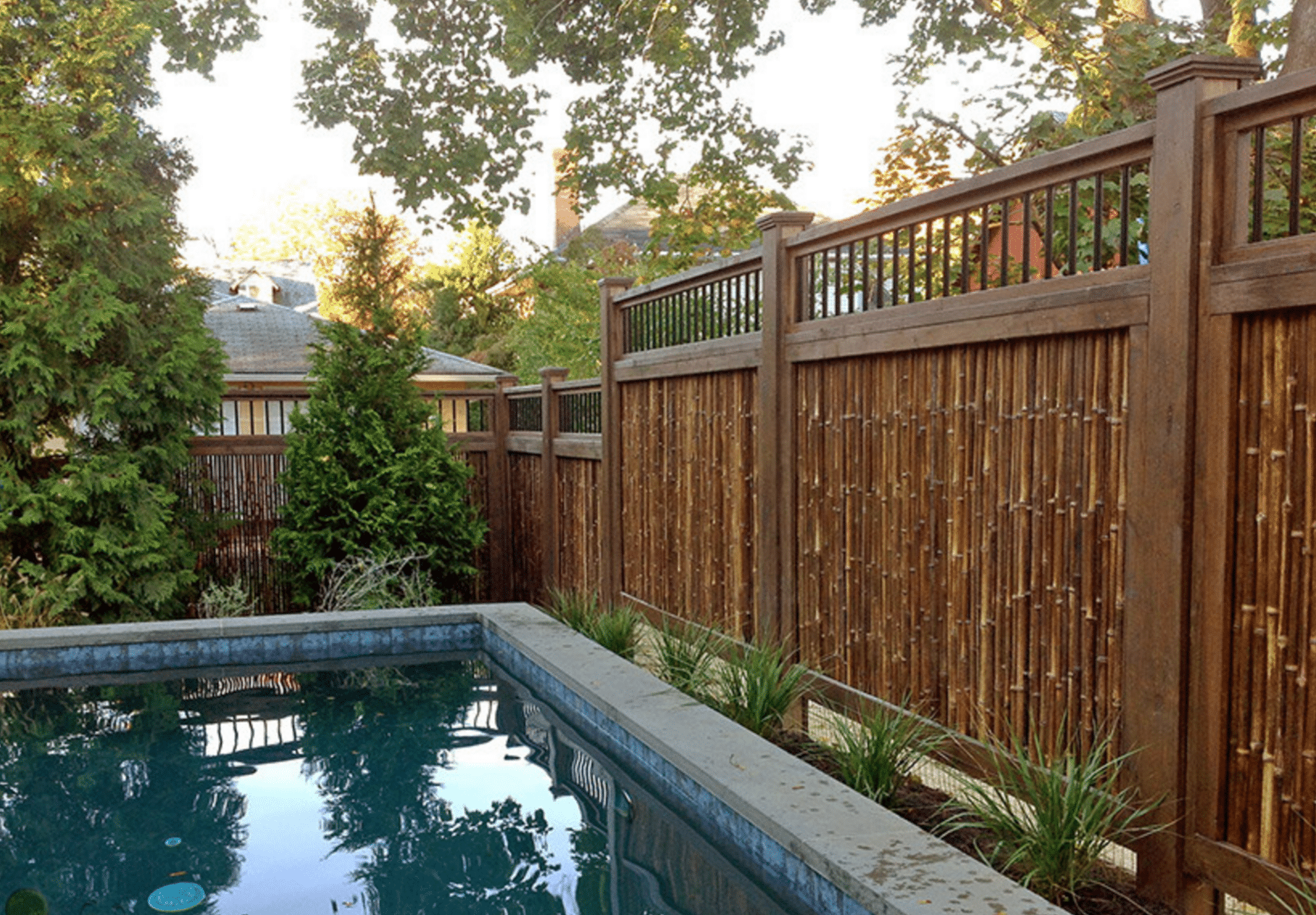All Categories
Featured
When safeguarding your residential property, choosing the appropriate fence height is vital for both personal privacy and security. The height of your fencing plays a considerable function in figuring out exactly how effective it will be at shielding your home or company from intruders. While a tall fence could feel like the best option, the optimal height depends upon several factors, including safety requirements, regional guidelines, and the materials used. Below, we'll outline crucial factors to consider to assist you select the excellent fence elevation for optimal safety.
![]()
If you live in an area governed by a homeowners' association (HOA), you must also examine any specific standards they have for fence elevation, design, and products. Following these guidelines guarantees you prevent legal concerns and preserve a great relationship with your neighbors.
Taller fences are harder to range and can considerably decrease the chance of burglaries. Adding attributes like pointed tops, barbed wire, and even electrical fence can additionally enhance the barrier's security. A fencing that gets to 8 feet or greater is frequently efficient at protecting against most individuals from quickly jumping over it.
![]()
Wood Fences: While wood fencings give personal privacy, they can be very easy to climb up, particularly if there are no anti-climb features. For maximum protection, take into consideration a wooden fencing that's 6 to 8 feet high with sharp tops or trellis expansions that make it harder to scale. Chain-Link Fences: Chain-link fences are usually much more sturdy and budget friendly than timber, and they can be built to the necessary height for safety and security. To boost deterrence, consider including barbed or razor wire on the top. These functions discourage climbing and make the fencing more tough to violation. Wrought Iron Fencings: Wrought iron fences are typically made use of for high-security purposes due to their stamina and resilience. Their upright bars make it difficult to climb, and they can be built to 6 to 8 feet high with additional spikes or decorative anti-climb features to further secure the perimeter. Plastic Fences: Plastic is an exceptional selection if you require a strong, exclusive fencing, however like wood, vinyl fencings may need additional elevation or security functions to hinder climbing up. Select a fencing that goes to the very least 6 feet high to make certain personal privacy and safety and security. Each material uses various advantages in regards to looks, sturdiness, and maintenance, so it is necessary to consider your specific needs and choices when picking a fencing.
Anti-Climb Functions: Setting up sharp or sharp tops, trellis extensions, or safety and security spikes at the top of the fencing makes it much more difficult for anybody to scale the fencing. These features serve as a solid deterrent to possible trespassers. Barbed or Razor Cable: Adding barbed cable or razor cord at the top of your fencing increases security substantially. This is typically utilized in high-security areas, such as commercial properties, but can also be an excellent choice for properties in risky areas. Electric Secure fencing: For top-level safety and security, you may wish to think about adding an electric fence to your residential or commercial property. Electric secure fencing, when set up correctly, can develop a strong deterrent while continuing to be reasonably discreet. It supplies a mild shock to any individual that attempts to touch or climb the fence. Incorporating elevation with these additional features ensures that your fencing gives the highest possible level of security.
Stabilizing the demand for privacy and protection while preserving the visual charm of your property can assist you select the right height and material for your fence. See to it that your fence enhances the overall design of your home and doesn't negatively influence the visual allure.
![]()
By meticulously considering all these aspects, you can develop a safe and secure, exclusive, and eye-catching border around your residential or commercial property that supplies both comfort and protection.

- Understand Resident Rules and Zoning Regulations. The initial step in picking your fence height is to familiarize yourself with regional guidelines. Many districts have zoning regulations that dictate the optimum allowable height for fencings, specifically ahead backyards and along building lines. Typically, front yard fencings are limited to 3 to 4 feet, while backyard fencings can be as tall as 6 to 8 feet or even more. Some locations may require an authorization for fences over a specific height, so it's critical to get in touch with your regional zoning office prior to starting building.
If you live in an area governed by a homeowners' association (HOA), you must also examine any specific standards they have for fence elevation, design, and products. Following these guidelines guarantees you prevent legal concerns and preserve a great relationship with your neighbors.
- Determine the Preferred Level of Protection. The degree of safety and security you need is a significant element in figuring out the ideal fencing elevation. If you're wanting to deter casual invaders or maintain youngsters and pets inside the lawn, a fencing in between 4 to 6 feet might be sufficient. For higher security requirements-- such as protecting against intruders or making sure security in high-crime areas-- you may need a taller fencing. A fence elevation of 6 to 8 feet is commonly advised for optimum safety and security.
Taller fences are harder to range and can considerably decrease the chance of burglaries. Adding attributes like pointed tops, barbed wire, and even electrical fence can additionally enhance the barrier's security. A fencing that gets to 8 feet or greater is frequently efficient at protecting against most individuals from quickly jumping over it.
- Pick the Right Material for Your Fencing. The material of your fence plays an important duty in its capacity to offer protection. While taller fences are much better for safety and security, the sort of material you use can improve or hinder the efficiency of the elevation. Right here are some preferred fencing products for safety:

Wood Fences: While wood fencings give personal privacy, they can be very easy to climb up, particularly if there are no anti-climb features. For maximum protection, take into consideration a wooden fencing that's 6 to 8 feet high with sharp tops or trellis expansions that make it harder to scale. Chain-Link Fences: Chain-link fences are usually much more sturdy and budget friendly than timber, and they can be built to the necessary height for safety and security. To boost deterrence, consider including barbed or razor wire on the top. These functions discourage climbing and make the fencing more tough to violation. Wrought Iron Fencings: Wrought iron fences are typically made use of for high-security purposes due to their stamina and resilience. Their upright bars make it difficult to climb, and they can be built to 6 to 8 feet high with additional spikes or decorative anti-climb features to further secure the perimeter. Plastic Fences: Plastic is an exceptional selection if you require a strong, exclusive fencing, however like wood, vinyl fencings may need additional elevation or security functions to hinder climbing up. Select a fencing that goes to the very least 6 feet high to make certain personal privacy and safety and security. Each material uses various advantages in regards to looks, sturdiness, and maintenance, so it is necessary to consider your specific needs and choices when picking a fencing.
- Add Protection Features for Additional Protection. While elevation is vital, including added protection features to your fence can boost its performance. Consider the following enhancements:
Anti-Climb Functions: Setting up sharp or sharp tops, trellis extensions, or safety and security spikes at the top of the fencing makes it much more difficult for anybody to scale the fencing. These features serve as a solid deterrent to possible trespassers. Barbed or Razor Cable: Adding barbed cable or razor cord at the top of your fencing increases security substantially. This is typically utilized in high-security areas, such as commercial properties, but can also be an excellent choice for properties in risky areas. Electric Secure fencing: For top-level safety and security, you may wish to think about adding an electric fence to your residential or commercial property. Electric secure fencing, when set up correctly, can develop a strong deterrent while continuing to be reasonably discreet. It supplies a mild shock to any individual that attempts to touch or climb the fence. Incorporating elevation with these additional features ensures that your fencing gives the highest possible level of security.
- Think About Privacy and Aesthetic Preferences. While security must be your primary concern, it's also essential to think about the aesthetic appeal of your fencing. Tall fencings may give protection, but they can sometimes show up enforcing or hostile. If privacy is a concern, a solid timber or plastic fencing can offer both safety and privacy, while a functioned iron fence offers safety and security with an open sight.
Stabilizing the demand for privacy and protection while preserving the visual charm of your property can assist you select the right height and material for your fence. See to it that your fence enhances the overall design of your home and doesn't negatively influence the visual allure.

- Last Ideas on Fencing Height and Safety And Security. Picking the ideal fence elevation for optimum security involves stabilizing a number of elements, including regional laws, the degree of security required, the product of the fencing, and additional safety and security attributes. Generally, a fencing elevation of 6 to 8 feet is ideal for most property homes, with taller fencings giving an included layer of defense for high-risk areas. Integrating the ideal elevation with a strong, climb-resistant material and added security functions will certainly aid make sure that your fence effectively protects your property. When making your last decision., constantly check local codes and consider your privacy and aesthetic preferences.
By meticulously considering all these aspects, you can develop a safe and secure, exclusive, and eye-catching border around your residential or commercial property that supplies both comfort and protection.
Latest Posts
Find Brake Repair & More: Full Repair Options from Montclare Auto Repair
Published en
1 min read
Learn About Montclare Auto Repair’s Leading Car Care Solutions and Why Drivers Trust Them
Published en
1 min read
Comprehending Roof Covering Guarantees: What Homeowners Ought To Know
Published en
1 min read
More
Latest Posts
Find Brake Repair & More: Full Repair Options from Montclare Auto Repair
Published May 26, 25
1 min read
Learn About Montclare Auto Repair’s Leading Car Care Solutions and Why Drivers Trust Them
Published May 25, 25
1 min read
Comprehending Roof Covering Guarantees: What Homeowners Ought To Know
Published May 24, 25
1 min read